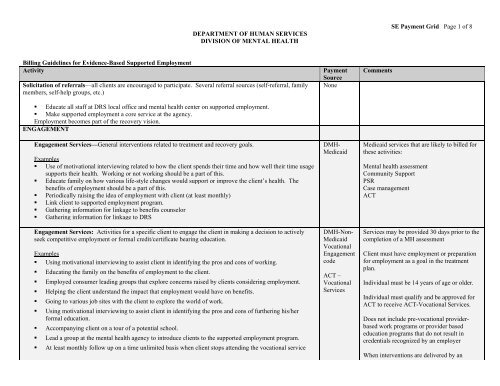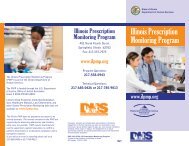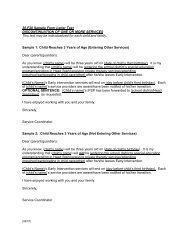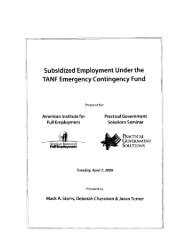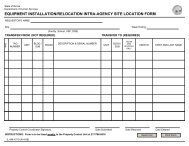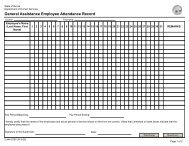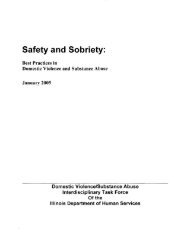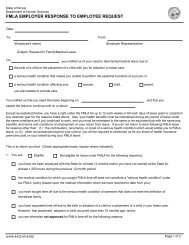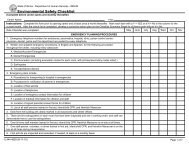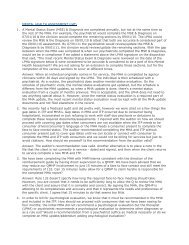SE Payment Grid Page 1 of 8 - Illinois Department of Human Services
SE Payment Grid Page 1 of 8 - Illinois Department of Human Services
SE Payment Grid Page 1 of 8 - Illinois Department of Human Services
You also want an ePaper? Increase the reach of your titles
YUMPU automatically turns print PDFs into web optimized ePapers that Google loves.
DEPARTMENT OF HUMAN <strong>SE</strong>RVICESDIVISION OF MENTAL HEALTH<strong>SE</strong> <strong>Payment</strong> <strong>Grid</strong> <strong>Page</strong> 1 <strong>of</strong> 8Billing Guidelines for Evidence-Based Supported EmploymentActivitySolicitation <strong>of</strong> referrals—all clients are encouraged to participate. Several referral sources (self-referral, familymembers, self-help groups, etc.)• Educate all staff at DRS local <strong>of</strong>fice and mental health center on supported employment.• Make supported employment a core service at the agency.Employment becomes part <strong>of</strong> the recovery vision.ENGAGEMENTEngagement <strong>Services</strong>—General interventions related to treatment and recovery goals.Examples• Use <strong>of</strong> motivational interviewing related to how the client spends their time and how well their time usagesupports their health. Working or not working should be a part <strong>of</strong> this.• Educate family on how various life-style changes would support or improve the client’s health. Thebenefits <strong>of</strong> employment should be a part <strong>of</strong> this.• Periodically raising the idea <strong>of</strong> employment with client (at least monthly)• Link client to supported employment program.• Gathering information for linkage to benefits counselor• Gathering information for linkage to DR<strong>SE</strong>ngagement <strong>Services</strong>: Activities for a specific client to engage the client in making a decision to activelyseek competitive employment or formal credit/certificate bearing education.Examples• Using motivational interviewing to assist client in identifying the pros and cons <strong>of</strong> working.• Educating the family on the benefits <strong>of</strong> employment to the client.• Employed consumer leading groups that explore concerns raised by clients considering employment.• Helping the client understand the impact that employment would have on benefits.• Going to various job sites with the client to explore the world <strong>of</strong> work.• Using motivational interviewing to assist client in identifying the pros and cons <strong>of</strong> furthering his/herformal education.• Accompanying client on a tour <strong>of</strong> a potential school.• Lead a group at the mental health agency to introduce clients to the supported employment program.• At least monthly follow up on a time unlimited basis when client stops attending the vocational service<strong>Payment</strong>SourceNoneDMH-MedicaidDMH-Non-MedicaidVocationalEngagementcodeACT –Vocational<strong>Services</strong>CommentsMedicaid services that are likely to billed forthese activities:Mental health assessmentCommunity SupportPSRCase managementACT<strong>Services</strong> may be provided 30 days prior to thecompletion <strong>of</strong> a MH assessmentClient must have employment or preparationfor employment as a goal in the treatmentplan.Individual must be 14 years <strong>of</strong> age or older.Individual must qualify and be approved forACT to receive ACT-Vocational <strong>Services</strong>.Does not include pre-vocational providerbasedwork programs or provider basededucation programs that do not result incredentials recognized by an employerWhen interventions are delivered by an
ActivityVOCATIONAL AS<strong>SE</strong>SSMENTAs Part <strong>of</strong> the Mental Health Assessment: Vocational assessment should be included in the initial mentalhealth assessment on all clients at intake. Vocational assessment should also be included in all updates to themental health assessment.Vocational assessment that is not part <strong>of</strong> the overall mental health assessment.Developing a vocational pr<strong>of</strong>ile to guide client choices in seeking and maintaining competitive employment. Avocational pr<strong>of</strong>ile typically includes information pertaining to work history, interests, skills, strengths,education, the impact <strong>of</strong> symptoms on the ability to use strengths, job preferences, etc. Vocational assessmentis continuous during all phases <strong>of</strong> obtaining and maintaining employment. New information gleaned fromexperience is incorporated to guide modification <strong>of</strong> the vocational plan.What would be a good job and setting match for the client?Examples• Interviewing client using guidelines found in the Evidence-Based Practice Supported EmploymentImplementation Resource Kit.• Using interest and preference inventories to increase client’s personal knowledge <strong>of</strong> employment-relatedinterests and preferences.• Helping client secure accurate information on job history and dates <strong>of</strong> previous employment.<strong>Payment</strong>SourceDMH-MedicaidDMH-Non-MedicaidVocationalAssessmentcodeACT –vocationalservices<strong>SE</strong> <strong>Payment</strong> <strong>Grid</strong> <strong>Page</strong> 2 <strong>of</strong> 8Commentsemployment specialist, they are most apt to bespecifically targeted to work. In these cases,they probably would/should not be billed toMedicaid.Ideally, 70% <strong>of</strong> services provided byemployment specialists should take placeoutside <strong>of</strong> the community mental healthcenter, e.g., potential employment sites,libraries, one-stop centers, at home, etc.Medicaid could be billed if the engagementaround work is part <strong>of</strong> general mental healthassessment process.Case management may be used when theemployment specialist has transferred theengagement process back to the case manageror another MH team member.Mental health assessment if part <strong>of</strong> largerassessment process or assessment <strong>of</strong> impact <strong>of</strong>symptomsMental health assessment if it is a cognitiveassessment that would be used also in moreglobal assistance with adaptationNon-Medicaid if only related to job<strong>Services</strong> may be provided 30 days prior to thecompletion <strong>of</strong> a MH assessmentThe client’s vocational goals should beintegrated in the treatment plan.Individual must be 14 years <strong>of</strong> age or older.Individual must qualify and be approved forACT to receive ACT-Vocational <strong>Services</strong>.Does not include pre-vocational workexperiences or simulated/situational work
Activity• Identifying and prioritizing preferences related to work environment, hours, location, transportation needs,etc.• Administering a test to determine basic reading and math abilities to assist with identifying job oracademic program fit (e.g. Test <strong>of</strong> Adult Basic Education or Wide Range Achievement Test).• Visiting competitive work sites with client to facilitate discussion <strong>of</strong> employment preferences concerns &desires.• Exploring with client how various jobs might influence substance use/abuse patterns.• Gathering information that an employer might find on a background check for purposes <strong>of</strong> planning jobsearch strategies.• Observing the client on the job to identify strengths and problems.• Identifying strengths, problems, and potential accommodations to address pertinent person-jobenvironmentfit issues after job loss.• Reviewing a job termination to learn what might contribute to a better job match and identify supportstrategies that might improve job tenure on the next job.<strong>Payment</strong>Source<strong>SE</strong> <strong>Payment</strong> <strong>Grid</strong> <strong>Page</strong> 3 <strong>of</strong> 8Commentsexperiences at the provider’s site.Ideally, 70% <strong>of</strong> services provided byemployment specialists should take placeoutside <strong>of</strong> the community mental healthcenter, e.g., potential employment sites,libraries, one-stop centers, at home, etc.JOB DEVELOPMENT/JOB FINDING SUPPORTSTherapeutic Support• Therapeutic support to help client manage their illness as they work toward achieving their health andrecovery goals. Employment can be one <strong>of</strong> the client’s goals.• Researching and linkage to ancillary services, e.g., childcare, medical/dental, psychiatric, transportation,legal, financial, educational.DMH-MedicaidMedicaid orNon-MedicaidVocationalCode (JobFindingSupports)ACT-Vocational<strong>Services</strong>Medicaid services that are likely to billed forthese activities:Community SupportPSRTherapy/CounselingCase managementACT• This depends on whether the service isdirectly related to working. If the linkageis solely for the purposes <strong>of</strong> obtainingemployment, the activity is billed to anon-Medicaid code.• When interventions are delivered by anemployment specialist, they are most aptto be specifically targeted to work. Inthese cases, they probably would/shouldnot be billed to Medicaid.
ActivityJob Development/Job Finding Supports: Activities for a specific client, directed toward helping them findand procure a job, when provided under the following conditions: placement based on consumer jobpreferences, competitive employment in integrated work settings, on-going supports as needed and integration<strong>of</strong> supported employment services with other mental health services. Typically provided in natural communitysettings.Examples• Using the “Conducting Job Searches” checklist from the Evidence-Based Practice Supported EmploymentImplementation Resource Kit to guide the job search process.• Helping the client identify job leads.• Reviewing the client’s network for job leads• Contacting employers about a job for a specific client, with or without the client being present.• Assisting a client in completing job applications and preparing for interviews.• Arranging a job interview• Accompanying a client on a job interview.• Evaluating a job or job site to determine if it is a good fit for the client,• Helping the client identify the pros and cons <strong>of</strong> disclosure.• Facilitating a group where clients exchange job leads and their experience using various job-findingstrategies with one another.• Accompanying one or more clients to the local One-Stop Employment Center and helping them learn touse the resources there.<strong>Payment</strong>SourceDMH Non-MedicaidJob FindingSupportscodeACT-Vocational<strong>Services</strong><strong>SE</strong> <strong>Payment</strong> <strong>Grid</strong> <strong>Page</strong> 4 <strong>of</strong> 8CommentsAt least 40% <strong>of</strong> the services in the aggregatemust be provided in natural settings, outsidethe provider’s <strong>of</strong>fice.Ideally, 70% <strong>of</strong> Job Finding Supports areprovided in natural community settings,outside <strong>of</strong> the community mental healthcenter, e.g., potential employment sites,libraries, one-stop centers, etc.Does not include general job development.
ActivityJOB PLACEMENTJOB RETENTION SUPPORTSNon-Job-Specific SupportsTherapeutic support to help client manage their illness as they work toward achieving their recovery goals.Recovery goals can include employment goals.Examples• Examining the impact <strong>of</strong> employment (benefits and losses/pros and cons) on health, relationships, supportsystems, routines, income, etc.• Examining challenges, disruptions, and conflicts in the person’s life that negatively impact on theindividual’s health and ability to work.• Examining thoughts and feelings to assist client in reinforcing and/or changing interactive behaviorimpacting his/her living and work environments.• Identifying influence <strong>of</strong> mental illness on the ability to function in various life roles, including the impacton work performance: controlling emotions, focusing on tasks, assertiveness, utilization <strong>of</strong> copingtechniques, socialization, boundary issues, responsibility and accountability.• Teaching and reinforcing previously learned strategies for controlling emotions, focusing on tasks,assertiveness, utilization <strong>of</strong> coping techniques, socialization, boundary issues, responsibility andaccountability• Averting crises and crisis intervention to help prevent symptom exacerbation and minimize disruptions tojob.Interventions carried out by mental health team members to help client function more effectively in thecommunity, which will also help client function better at workExamples• Coaching on & procuring appropriate clothing and personal appearance• Assisting consumer in making transportation arrangements• Transportation training• Facilitate the resolution <strong>of</strong> child care issues• Identifying and practicing strategies to manage symptoms<strong>Payment</strong>Source*DRS-$1045Milestonepayment for1 st day atjob.DMH-Medicaid<strong>SE</strong> <strong>Payment</strong> <strong>Grid</strong> <strong>Page</strong> 5 <strong>of</strong> 8CommentsMedicaid services that are likely to billed forthese activities:Mental health assessmentCommunity SupportPSRCase managementACTFor Medicaid billing, it is important that thecase note focus on addressing the client’smental illness, not specific employment goals.If the intervention was directed toward themanagement <strong>of</strong> a symptom <strong>of</strong> the mentalillness or application <strong>of</strong> illness managementstrategies to reduce the negative impact <strong>of</strong>symptoms on the persons ability to function(including function at work), it is most likely aMedicaid service.
ActivityInterventions Targeted To Helping The Client Succeed On A Specific JobExamples• Using the “Planning for Success” checklists in the Evidence-Based Practice Supported EmploymentImplementation Resource Kit to identify, plan and guide the implementation <strong>of</strong> ongoing job supports.• Helping the client identify the pros and cons <strong>of</strong> disclosure.• Helping the client develop a plan for the first day/week/month <strong>of</strong> a new job.• Helping the client identify how they will know if their employer is pleased with their work? Dissatisfied?• Helping the client identify and make use <strong>of</strong> their support system to manage their concerns about work.• Participating in a job support group.• Frequently talking with client about changes in health, work environment, or personal environment toidentify needed support changes and avoid crises.• Identifying work-related conflicts or challenges on the job. (interpersonal, task, routine, etc.)• Helping the client identify and implement strategies that improve job performance or relationships at work.• Reinforcing the use <strong>of</strong> previously learned strategies for controlling emotions, focusing on tasks,assertiveness, utilization <strong>of</strong> coping techniques, socialization, boundary issues, responsibility andaccountability, while on the job.• Visiting the client at the job site to identify and address issues pertinent to job retention.• Working with the supervisor and client to establish effective supervision and feedback strategies,• Working with the client and employer to make reasonable accommodations to enhance job performance,• Contacting the employer to monitor progress and resolve issues.• Contacting family to monitor support network and resolve issues.<strong>Payment</strong>SourceDMH-Non-MedicaidJobRetentionSupportscodeACT-Vocational<strong>Services</strong>*DRS $800milestonepayment for5 days <strong>of</strong> jobtenure*DRS $849milestonepayment for30 days <strong>of</strong>job tenure*DRS $2500milestonepayment for90 days <strong>of</strong>job tenure<strong>SE</strong> <strong>Payment</strong> <strong>Grid</strong> <strong>Page</strong> 6 <strong>of</strong> 8CommentsA minimum <strong>of</strong> 40% <strong>of</strong> the services in theaggregate must be provided in natural settings,outside the provider’s <strong>of</strong>fice. Ideally, 70% <strong>of</strong>Job Retention Supports are provided in naturalsettings, e.g., at the work site, on the way to orfrom work, at home, in a c<strong>of</strong>fee shop duringthe employee’s lunch break, at the home <strong>of</strong> asignificant support person, at one-stop centers,etc.If the intervention was directed toward aspecific job, specific job tasks, or generalsupport around the job, it is most likely a non-Medicaid service.DRS will consider re-opening closed cases ifthey evaluate a new plan to have reasonablelikelihood <strong>of</strong> success.If client loses job sooner than 90 days,agencies are not paid for milestonespreviously achieved. <strong>Payment</strong> for subsequentmilestones will be made after each outcome ismet. Each milestone will only be paid onetime, unless a closed case is re-opened.
ActivityJOB LEAVING/TERMINATION SUPPORTS: General therapeutic support around loss, feelings <strong>of</strong>incompetence, paranoid thoughts about the employer, etc.JOB LEAVING/TERMINATION SUPPORTS: Activities for a specific client directed toward helping themleave a job in good standing, when provided under the following conditions: placement based on consumer jobpreferences, competitive employment in integrated work settings, on-going supports as needed, and integration <strong>of</strong>supported employment services with other mental health services. Job Leaving/Termination Supports may also beprovided to help the client see unplanned job loss as transitional and a learning experience that will help them withhis/her next job. Job Leaving/Termination Supports are provided to ensure that job loss due to termination is notseen as a reason to discontinue participation in the supported employment program.Interventions Targeted To Helping The Client With Leaving/Terminating A Specific JobExamples• Using the “Planning for Success: Leaving the Job Consumer Checklist” from the Evidence-Based PracticeSupported Employment Implementation Resource Kit when the client expresses dissatisfaction with theirjob.• Using motivational interviewing to help client identify the pros and cons <strong>of</strong> leaving their job.• Deciding how much notice is required to leave in good standing.• Coaching on talking to a supervisor about resigning.• Helping write a letter <strong>of</strong> resignation.• Coaching on how to obtain a letter <strong>of</strong> reference.• Helping client see work accomplishments despite job termination.• Ensuring client that you will continue to help them find and keep meaningful employment.• Helping client understand how job experiences build their effectiveness as a worker.• Encouraging client to review a job termination and job experience to help find a better job match and learnwhat might improve job tenure on the next job.• Arranging for client to speak with other consumers who have lost jobs about their experiences.<strong>Payment</strong>SourceDMH-MedicaidDMH-Non-MedicaidJob Leaving/TerminationSupportsACT-Vocational<strong>Services</strong><strong>SE</strong> <strong>Payment</strong> <strong>Grid</strong> <strong>Page</strong> 7 <strong>of</strong> 8CommentsMedicaid services that are likely to billed forthese activities:Community SupportPSRACTTherapy/counselingJob loss is not a reason to discontinueparticipation in supported employment.
ActivityOTHER REQUIRED ELEMENTS FOR EVIDENCE-BA<strong>SE</strong>D SUPPORTED EMPLOYMENTProgram support activities/ Meetings and coordination<strong>Payment</strong>Source<strong>SE</strong> <strong>Payment</strong> <strong>Grid</strong> <strong>Page</strong> 8 <strong>of</strong> 8Comments• mental health treatment team meetings—employment specialists attends one or more treatment team Medicaid Medicaid: Billed by one staffmeetings per week• frequent contact with treatment team members—at least 3 client-related case manager contacts per week Medicaid Medicaid: Billed by one staff• group supervision with other employment specialists—at least weekly# None• Employment specialists help each other with cases—provide services for each other’s cases and back upsupport for each other.<strong>Services</strong>billed asabove.• Setting up and attending inter-agency staffings, e.g. case specific coordination with DRS.# None• Completing all appropriate billing, progress, crisis, demographic and outcome reports.# None• Participating in training or program consultation# None• Participating in program evaluation activities# None• Participating in non-client specific performance improvement meetings and activities# None*If the customer leaves a job before the end <strong>of</strong> 90 days the payment schedule resumes when they start another job and reach the days marker attained at the previous job (e.g., acustomer leaves a job at 28 days. The community program receives the $1,045, and the $800 payment. The customer starts another job. The community program receives the $849payment when the customer has kept that job for 30 days and the $2,500 payment when the customer has kept the job for 90 days). Funding for the milestone payments will comeout <strong>of</strong> regular DRS case service dollars, not from the DRS Supported Employment line <strong>of</strong> funding. DRS may also be able to pay for items necessary to start employment, if thecustomer does not have other options. Example items are bus passes, license fees, uniforms, a particular vocational training, etc. In this plan, DRS mostly pays for outcomes and,for the most part, DMH pays for services. Therefore, support services such as those necessary to prepare an individual to start a job search, long-term follow up post 90 days,assistance with finding another job post - 90 days are billed to the appropriate codes (either Medicaid or Non-Medicaid) according to the guidelines set forth in this document. Ona case by case basis, with the agreement <strong>of</strong> the customer, the DRS counselor and the CMHC Employment Specialist, additional DRS funding for disability related services post the90 day payment mark that are necessary to help the individual to keep the job or find another one, can be considered (e.g., a customer needs a new hearing aid to keep a job as asecretary).# The milestone payments paid by DRS <strong>of</strong>fset these costs. Since evidence-based supported employment has been shown to result in higher competitive employment rates,implementing the high fidelity evidence-based supported employment is likely to result in more milestone payments.


